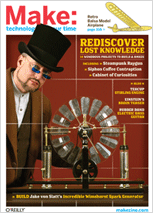
Photo from Museum of Retro Technology
Years ago, I came upon The Victorian Internet by Tom Stangadge. It’s a fascinating read, telling the tale of how the world was girdled by copper wires carrying text messages to far flung places. The Victorian Age’s instant messaging system allowed geography and time to be compressed through the mysterious and seeming magical telegraph system. I grew up down the street from the Western terminus of the First French Atlantic Cable, not to be confused (as it was) with the First Transatlantic Cable. It was possible to lay down the cable across the floor of the North Atlantic only because of the outsized steamship, the Great Eastern, which was so unusually configured, its owners had a habit of going bankrupt.
From Tom Standage, Author of The Victorian Internet
During Queen Victoria’s reign, a new communications technology was developed that allowed people to communicate almost instantly across great distances, in effect shrinking the world faster and further than ever before. A world-wide communications network whose cables spanned continents and oceans, it revolutionized business practice, gave rise to new forms of crime, and inundated its users with a deluge of information. Romances blossomed over the wires. Secret codes were devised by some users, and cracked by others. The benefits of the network were relentlessly hyped by its advocates, and dismissed by the skeptics. Governments and regulators tried and failed to control the new medium. Attitudes to everything from news gathering to diplomacy had to be completely rethought. Meanwhile, out on the wires, a technological subculture with its own customs and vocabulary was establishing itself.
In London and Paris, there were so many messages, that they had to invent a new, more effective way to physically carry the messages, pneumatic tubes. The vacuum pressure needed to suck the message containers through the tubes was achieved through steam power.
Photo from American Museum of Photography
Telegraphers were the alpha geeks of their age. With specialized technical know-how and their skill at code, they helped to transform their cultures and language. While the technologies are still evident in online galleries, bricks and mortar museums, the technologies of telegraphy and the Victorian Internet are in many ways lost knowledge.
Photo from Tom Perera
Telegraph keys ranged from rudimentary affairs to carefully machined metal instruments. Often the operator placed a metal snuff tin over the sounder to make it easier to hear.
The Once and Future Web has some great resources, pictures, definitions and more on the teletype. There you can find classroom activities, such as a project where students can compare the telegraph to the internet.
Picture from OfficeMuseum.com
There is a rich maker history of the telegraph, photos, devices made for and by telegraph operators, station offices, buildings, and the messages themselves. Everything about the telegraph system had to be made, telegraph keys and sounders, code for communication, batteries, cable between towns, undersea cables and all the tools to make and install the equipment. Telegraphy and its’ communications advances was possible only because of the steam age’s makers.
Have you learned to send or receive messages over the telegraph? How did you learn Morse Code? Can you send a message with code faster than a teenager with a cellphone? Where do you see pneumatic message delivery systems in this modern age? Have you taught or taken a class where the telegraph systems were built or used? Have you built a telegraph key or sounder? How has telegraphy affected your life? What does the telegraph have to teach us about the internet, technology, history or the future of communication? Join the conversation in the comments, and add your photos and video to the MAKE Flickr pool.
Check out MAKE, Volume 17: The Lost Knowledge issue!
Buy your copy in the Maker Shed Subscribe to MAKE Access the Digital Edition (if you’re already a subscriber)
ADVERTISEMENT






